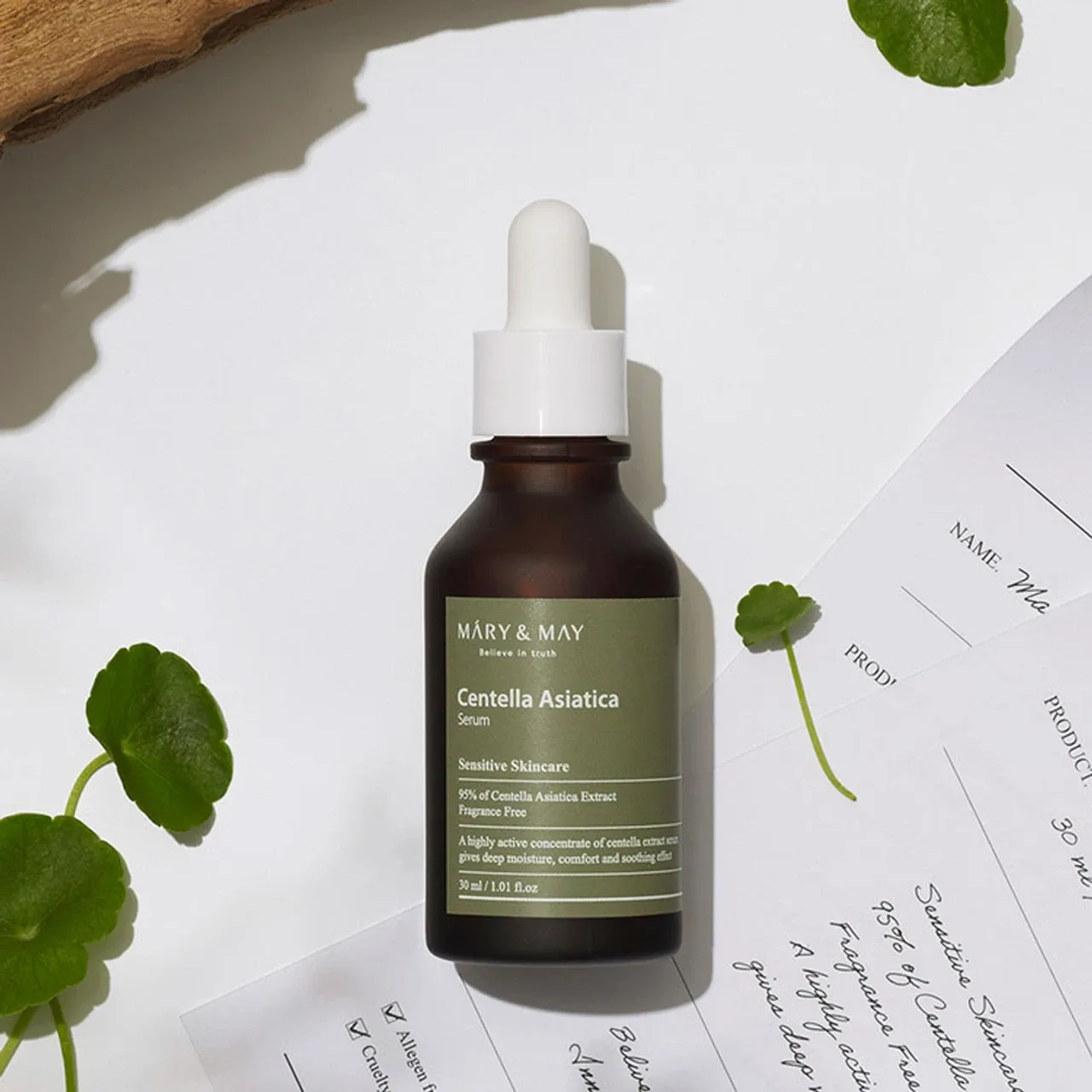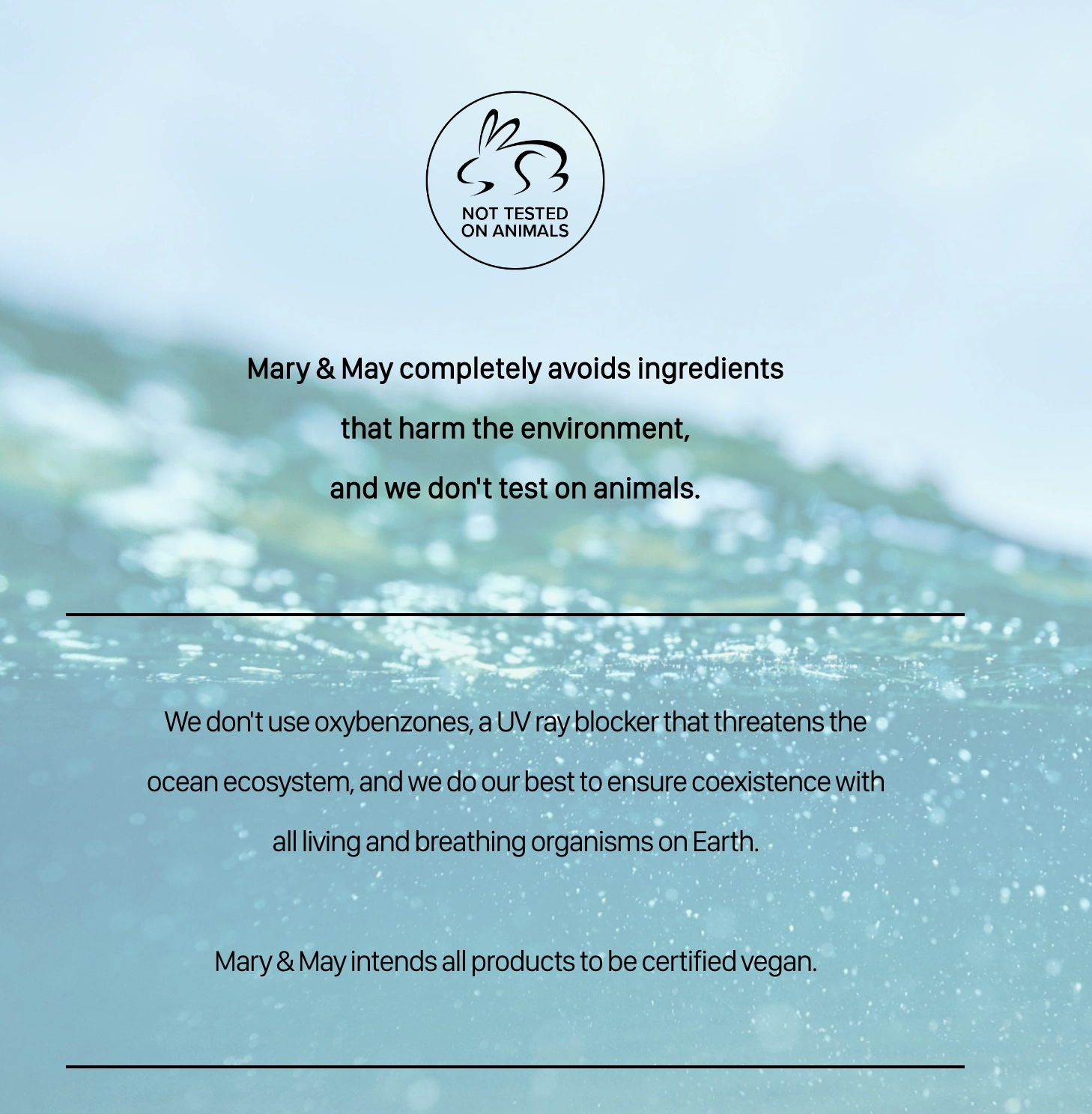Mary and May seems to be the minimalist, eco-friendly K-beauty brand that sustainable dreams are made of. But a closer look at their cruelty-free and vegan policies has us unsure.
Mary and Mary is not 100% cruelty-free or vegan, as its products are sold where animal testing is required by law. It also cannot be considered vegan as it is not cruelty-free.
However, if you are looking for alternatives to Mary & May in the same price range with the same quality, click here.
Mary & May Ethical Overview
Mary and May is Not Cruelty-Free
Test any of its products or ingredients on animals
NO
Purchase any ingredients tested on animals within its supply chain
MAYBE
Distribute its products to any countries that require animal testing by law.
Maybe
Mary and May does have an online store for China but we could not confirm if the brand also sells in Chinese stores.
This means that animals could be tested on Mary and May.
Unless we can confirm that this is NOT the case- we won’t confidently call a brand cruelty-free.
Does Mary & May Test on Animals?
Mary & May don’t test ingredients or products on animals themselves… But the brand allows testing to be conducted when required by law.
However, they still have a stance on cruelty-free cosmetics.
What Is Mary & May’s Cruelty-Free Status in 2023?
Here is a screenshot of Mary & May’s official statement regarding its cruelty-free policies and vegan products, taken from its website:
We don’t know about you, but that’s too vague for our liking.
Mary & May Has No Cruelty-Free Certification
Proclaiming to be a “cruelty-free” brand without any backing is a little suspicious.
Ideally, all brands that consider themselves cruelty-free should be Leaping Bunny certified.
While you might know PETA very well – it surprisingly doesn't hold the strictest cruelty-free regulations. Leaping Bunny certification is the gold standard to live up to.
Did you know that in the US, most animal testing is regulated by the Animal Welfare Act (1966)? If you did know this, did you know that this act does not include birds, rats, and mice, which make up 95% of animals used in research?
Is Mary and May Sold Where Animal Testing is Required By Law?
Yes, Mary and May distributes its products in China through their online store.
We couldn’t confirm that Mary and May only sell online. This is important because imported cosmetics and beauty products intended to be sold in stores are required to be tested on animals on arrival at the border.
China has a shocking track record. It is the country with the most animal testing globally, with over 20 million animals used per year.
However, if you live in China or are concerned about its cruel beauty policies, there are a couple of loopholes.
Here's how to find cruelty-free cosmetics in China: Are Cosmetics Made in China Cruelty-Free?
Mary and May is Not Vegan
Although May and May claims to have vegan ranges, it’s hard to consider any of its products that are free of animal-derived ingredients as “vegan” because it’s not 100% cruelty-free.
Does it have products that are free of animal-derived ingredients? Yes.
Are these products considered holistically vegan? Not in our opinion.
The only animal-derived ingredient that Mary and May uses is: marine collagen
Vegan Alternatives to Mary and Mary
Brand | price range | 100% vegan | Certification |
|---|---|---|---|
$5 - $15 | Yes | PETA, Leaping Bunny | |
$20 - $50 | Yes | Leaping Bunny | |
$5 - $70 | Yes | Leaping Bunny | |
$5 - $30 | Yes | PETA, KARA | |
$15 - $30 | Yes | Leaping Bunny |
Mary and May is Not Considered Natural and Organic
Despite using a high amount of natural ingredients, Mary and May isn’t considered natural or organic.
The brand’s main aim is to use premium quality, safe and clean ingredients in the right amounts to create highly effective products.
All products use a certain amount of synthetic ingredients in their formulas. Mary and May is no exception – but it does choose to use better or clean synthetics.If a synthetic ingredient is "clean," it means it is safe and non-toxic for us. Its purpose is to preserve the stability of a beauty formulation.
A few naturally-derived ingredients Mary And May uses to enhance its cosmetics include:
Mary and May Has No Allergy Ranking, Yet
Skin Safe does not have Mary and May listed.
However, Mary and May’s products are free of allergens such as lanolin, parabens, and artificial scents.
Mary and May never use BHA, isothiazolinones, imidazolidinyl urea, benzalkonium chloride, Diazolidinyl urea, BHA, benzalkonium chloride, Diazolidinyl urea, BHT, 0-Cymen-5-ol, sorbic acid, thymol, phenoxyethanol, isopropyl alcohol, diisononyl phthalate, triethanolamine, sodium lauryl sulfate, sodium laureth sulfate, benzophenone-3, or butyl methoxydibenzoylmethane.
Some Mary and May products have EWG (Environmental Working Group) Green Grade certified. The product ranks well on health and ecological safety and ingredient transparency.
Reading the ingredient list is crucial because although Mary and May is dermatologically tested, it is not 100% hypoallergenic or non-comedogenic and doesn’t claim to be.
However, certain products are specifically for these concerns, so make sure you buy what your skin needs.
The EU/UK Have Stricter Ingredient Regulations
We don’t want to scare you, but you HAVE to read up on any product’s ingredient list before you make a purchase – especially if you live within the United States. The reason why will shock you.
The FDA has only banned or restricted 11 harmful chemicals from cosmetics within the country. Europe and the UK, on the other hand, have banned 1,328!
Mary and May strives to set a great example of what true clean beauty is meant to be, so you shouldn’t worry about any serious hidden nasties in its products.
It’s worth knowing that with skincare, you want to avoid these ingredients:
Mary and May Is Minimally Sustainable and Ethical
One of the causes Mary and May supports is the reforestation of indigenous trees in Korean, in collaboration with Tree Planet.
It's no secret that the world has a huge waste problem, and cosmetic brands only make it worse by using unsustainable packaging and harmful ingredients.
Mary and May takes environmental accountability by:
Final Thoughts
While those sustainability efforts might seem encouraging, we’re disappointed with the lack of transparency around Mary and May’s selling in China.
This influences their cruelty-free status, and that makes their claim of being almost entirely vegan shifty.
While the brand is super appealing for the wellness girlies, the ethics aren’t conscious enough. Mary and May could improve by gaining cruelty-free certification and verifying the source of their marine collagen.
What remains to be seen is how the brand would respond to customers calling them out!


